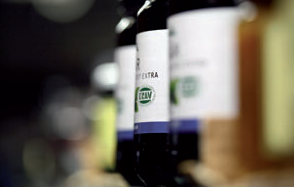Archive:Organic farming statistics — setting higher standards
- Published in Sigma - The Bulletin of European Statistics, 2010/01
Organic farming is an agricultural production method which places the highest emphasis on environmental protection and animal welfare considerations. It avoids or largely reduces the use of products authorised in conventional agriculture, such as synthetic pesticides, herbicides, chemical fertilisers, growth promoters such as antibiotics, and genetically modifi ed organisms. For a number of years now, Eurostat has been collecting data on organic farming, yet a lot still remains to be done, as Marleen De Smedt, Ana Martinez Palou and Elisabeth Rohner-Thielen from the Health and Food Safety Unit at Eurostat told Sigma.
Introduction
‘We started collecting data on organic farming back in 1997,’ said Ms De Smedt, who headed the unit until 1 September 2009. ‘However, they were not perfect. As of 2000, we noted some improvements in the quality of statistics delivered to us, but even today many EU countries do not produce separate data on organic agriculture. It is automatically considered to be part of conventional agriculture.’
Dynamic sector
However, existing statistics demonstrate that organic agriculture in the European Union is one of the most dynamic sectors characterised by a steady growth in size, today accounting for an estimated 7.2 million hectares of land and more than 180 000 certifi ed organic farms. Four per cent of the total utilised agricultural area (UAA) in the EU is organic, accounting for more than 20 % of the world’s organic land.
European Union regulations stipulate that in order for the product to be certifi ed as organic it has to be sown, in the case of crops, or reared, in the case of animals, on land that has been certifi ed as organic for a period of at least two years. ‘According to EU regulations, organic land areas include both fully converted and “under conversion” areas,’ explained Ms Martinez Palou. ‘Italy, Germany and Spain have the largest parts of their arable land converted to the needs of organic farming.’
Organic production is strictly regulated under harmonised EU rules, which changed on 1 January 2009. The rules guarantee the authenticity of organic farming products wher ever they are produced and ensure that the labelling of these products is accurate. All foods sold as organic must come from organic operators who are registered with an approved control body and subject to regular inspections.
‘The certification and control bodies, which determine whether a producer is entitled to label their products as organic, are created and supervised by the Member States,’ said Ms Martinez Palou. ‘Three EU regulations from 2007 and 2008 specify the requirements and the procedures to follow, and apply to both crop and livestock farmers.’


